Night blooming flowers
When talking about a landscape with plants in blossom, it is common to imagine a daytime scene: a field covered by sunflowers (Helianthus annuus L.) depending on the position of thesun, the classic Dutch picture of a field full of tulips (Tulipa spp.) growing around a windmill, the Japanese cherry trees in blossom (Prunus spp.), or some Yucatecan avenue embellished with flamboyant trees (Delonix regia (Hook.) Raf.) covered by red flowers, among many others. However, there are plants that produce flowers whose beauty or aroma can only be enjoyed at night.
Exclusive to the American continent, with the exception of one species, the Cactaceae family lives mainly in arid and dry environments. Adapted to these conditions, their bodies are formed by a stem, whether columnar, spherical or flattened, which is thickened because its storage tissues (parenchyma) are highly developed, which allows it to store nutrients such as water and minerals. Their leaves are usually modified on thorns to reduce water loss and to protect them against predators. In addition to these adaptations, some species of this family have developed flowers that open only during night to be pollinated by animals such as bats or moths.
Such is the case of the species belonging to the genus Cereus, name which means candle in Latin, due to the silhouette of its habit of columnar growth, which branches as the plant grows. Among the species belonging to this group is C. repandus (L.) Mill., a South American cactus whose creamcolored flower opens only for one night to be visited by its pollinators. The result of this pollination is a fruit with the appearance of an apple but whose interior has texture, flavor and consistency comparable to the dragon fruit or pitahaya.
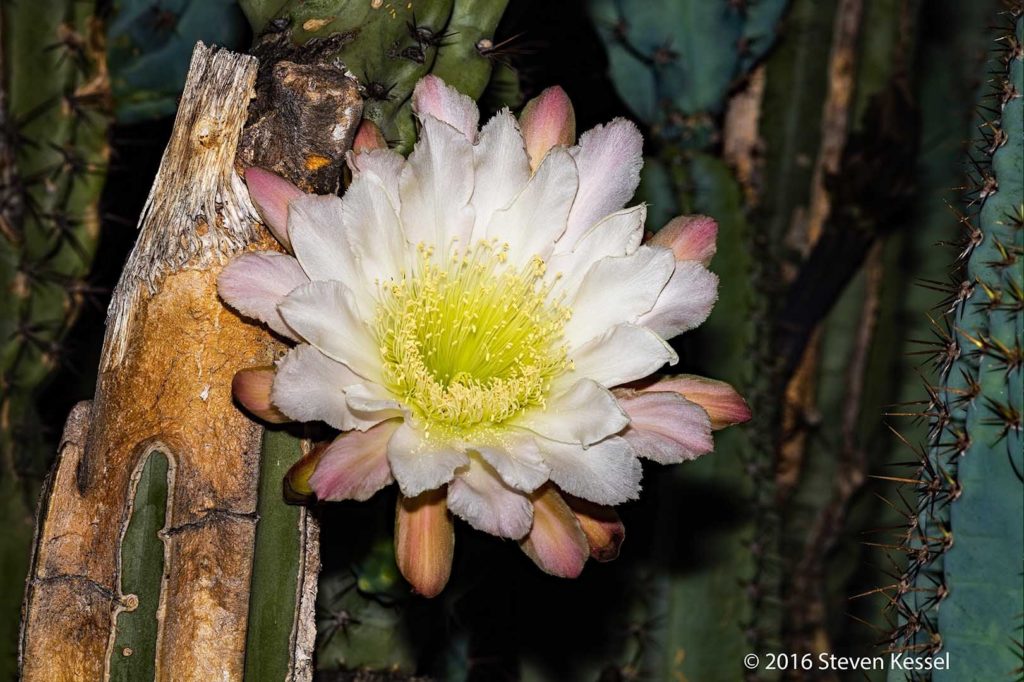
Flower of Cereus repandus (L.) Mill. Photography: Steven Kessel © 2016.
Speaking of this delicious fruit, whose scientific name is Hylocereus undatus (Haw.) Britton & Rose, although its pulp is extremely similar to C. repandus, as we mentioned earlier, the growth habit of the pitahaya plant is totally different, since it is a creeping or climbing, vine-like cactus. Its flowers, white and fragrant, also last a single night.
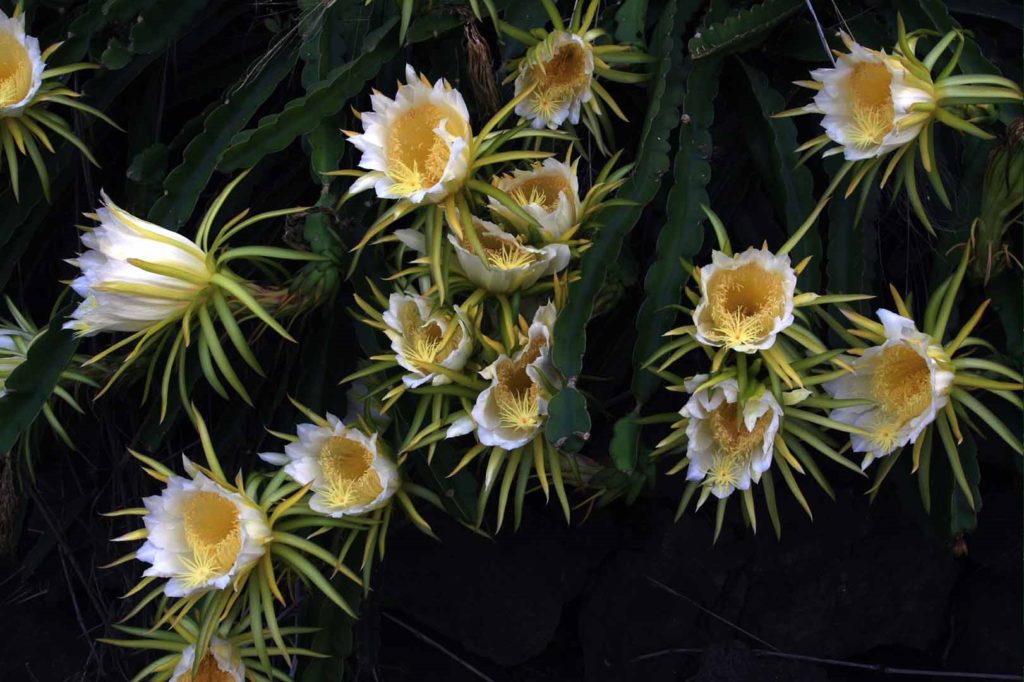
Flowers of pitahaya or dragon fruit (Hylocereus undatus (Haw.) Britton & Rose) waiting to be pollinated. Photography: Brocken Inaglory, CC BY-SA 3.0, https://commons.wikimedia.org/w/index.php?curid=9459175
Another genus of night-flowering cacti, closely related to that of the pitahaya, is Selenicereus, name that derivates from Selene, the Greek goddess of the moon. Its main representative is the Queen of the Night (S. grandiflorus (L.) Britton & Rose), which as its name indicates in Latin, produces large flowers, which have a delicate aroma similar to vanilla and an indescribable beauty. Like the species mentioned above, it lasts only one night.

Growth habit of Selenicereus grandiflorus (L.) Britton & Rose. Photography: Pato Novo a – Cactaceae – Selenicereus grandiflorus (L.) Britt.&Rose. CC BY 2.0, https://commons.wikimedia.org/w/index.php?curid=21303367
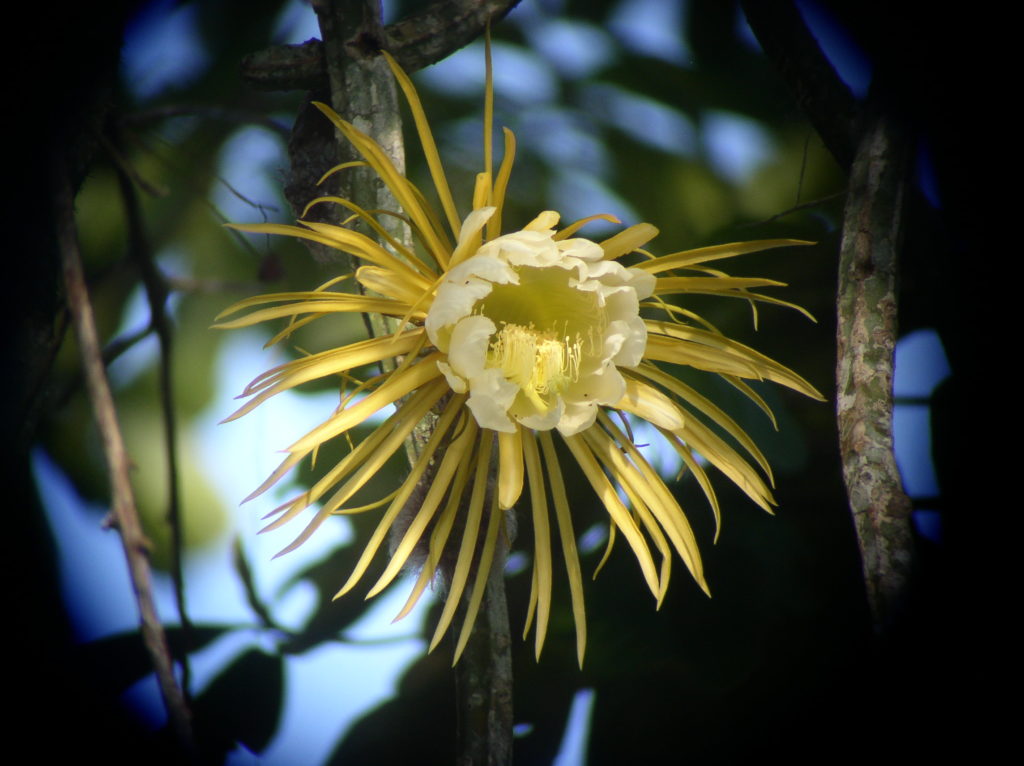
The flower of S. grandiflorus looks similar to H. undatus, but larger. Fotografía: Richard C. Hoyer, WINGS – [1], CC BY 3.0, https://commons.wikimedia.org/w/index.php?curid=9084987
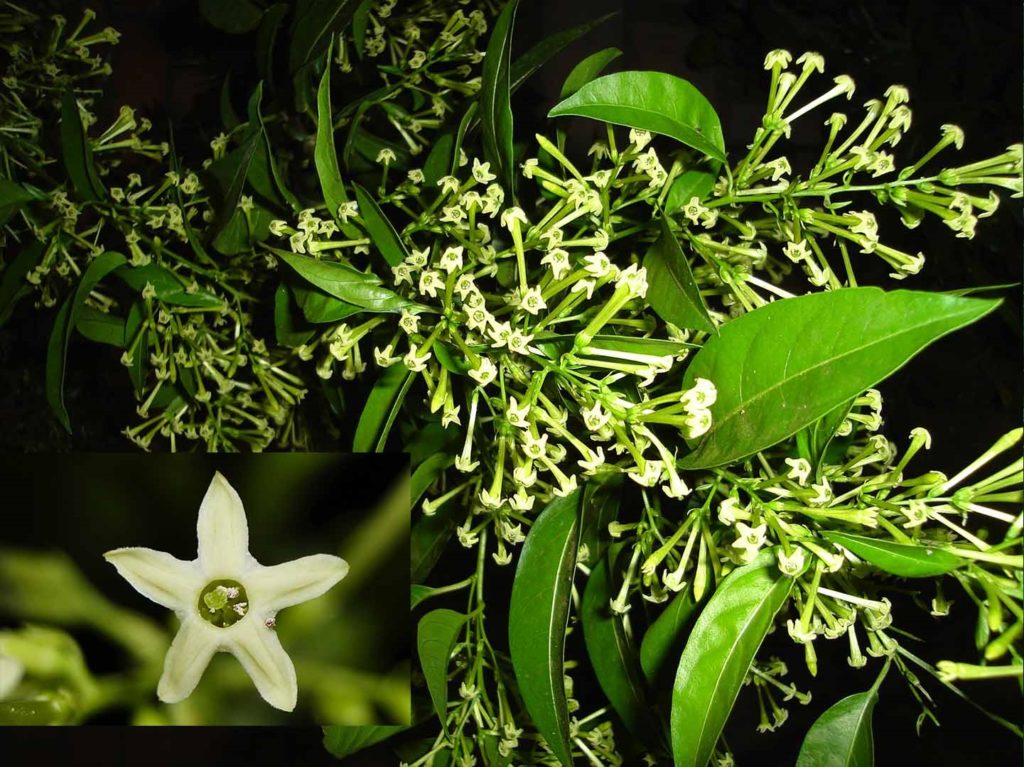
Flowering of C. nocturnum, and close-up of a flower. Habit photography: Diorit – Own work, CC0, https://commons.wikimedia.org/w/index.php?curid=2559952. Detail photography: SKsiddhartthan – Own work, CC BY-SA 4.0, https://commons.wikimedia.org/w/index.php?curid=57785097
The Night Fragrant Epidendrum is a member of the family of orchids, which its scientific name is Epidendrum nocturnum Jacq., a plant that grows generally epiphytic (that is, it grows on other plants, without being considered parasitic). Its white flowers of intriguing beauty release an exquisite aroma in the evening hours.
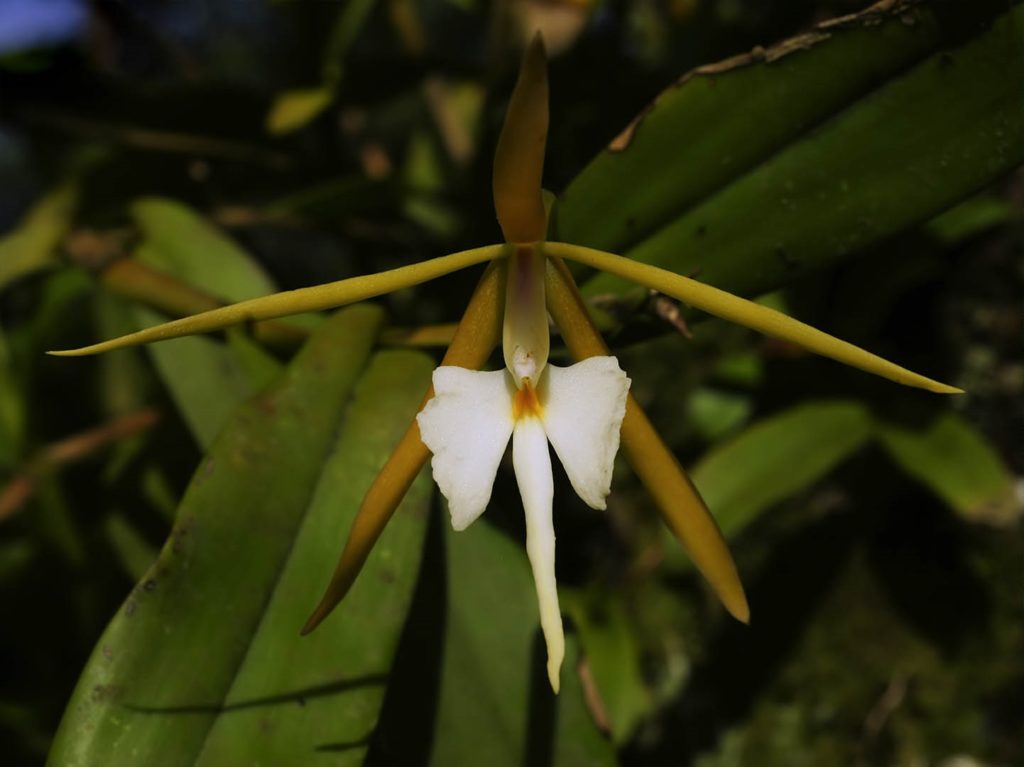
Epidendrum nocturnum Jacq. Photography: © Hans Hillewaert / CC BY-SA 3.0, https://commons.wikimedia.org/w/index.php?curid=7893269
It is important to remember that it usually happens that two or more species share the same common name, hence the importance of scientific nomenclature, which gives each species of living being a distinctive name that is used throughout the world. In the same family of the Solanaceae there is another plant that receives the name of Lady of Night. It is Brunfelsia americana L., a mediumsized shrub whose white or yellow flowers, although they remain open all day, they only release their fragrance at night.
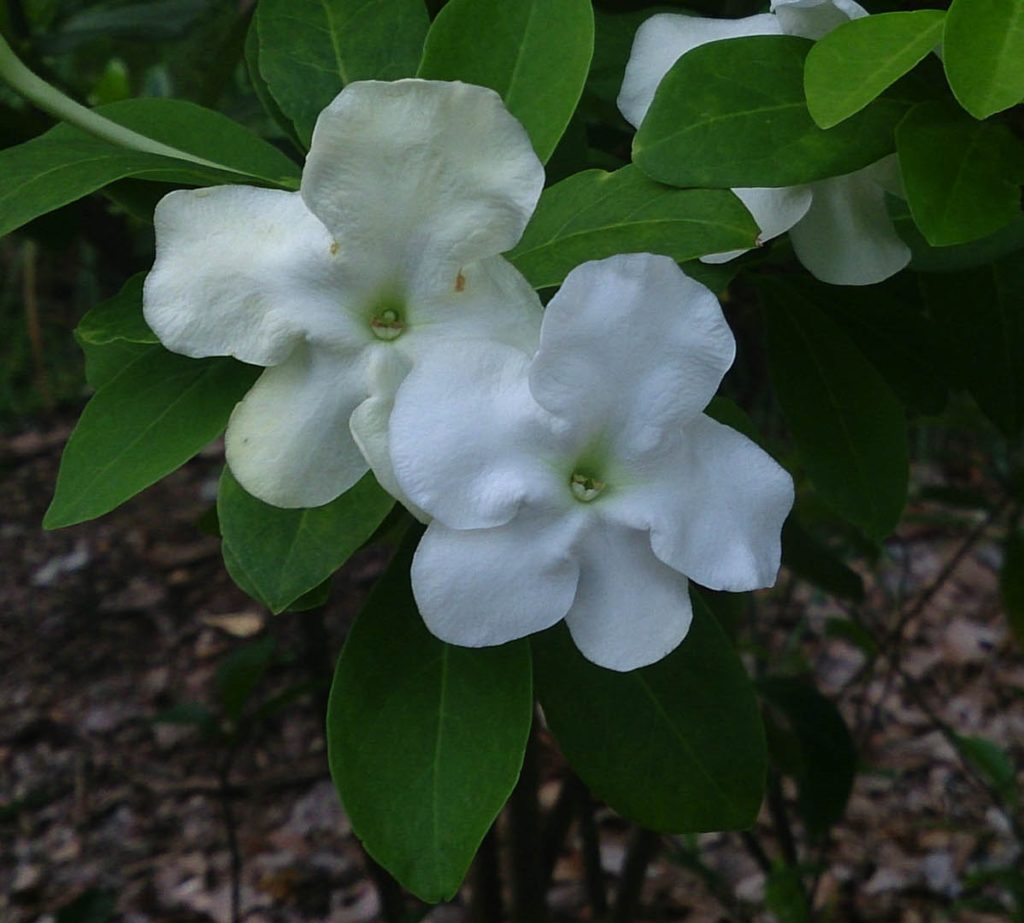
Brunfelsia americana L. Photography: Mokkie – Own work, CC BY-SA 3.0, https://commons.wikimedia.org/w/index.php?curid=33621365
Even among aquatic plants there are also flowers that open only at night, as is the case of the Egyptian white water-lily (Nymphaea lotus L.), which is considered to be one of the most important plants present in the art of ancient Egypt, used to beautify ponds, and in traditional medicine. In present days, it continues being cultivated as ornamental plant in landscaping.
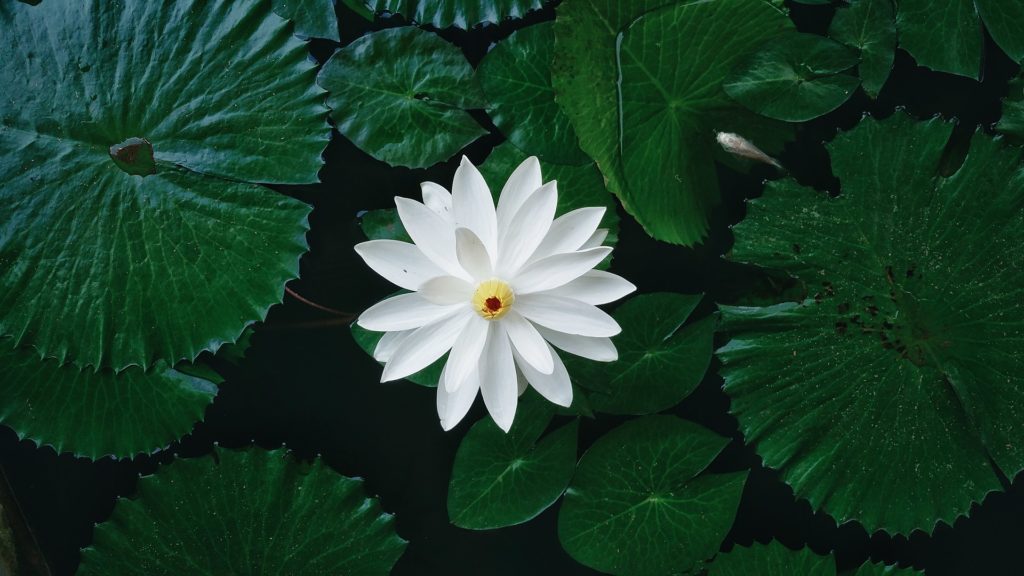
This small sample reminds us of the great variety of adaptations that living beings have developed thanks to evolution in order to survive, even becoming part of the nocturnal landscape.
Definitely, Mother Nature will never cease to amaze us.








